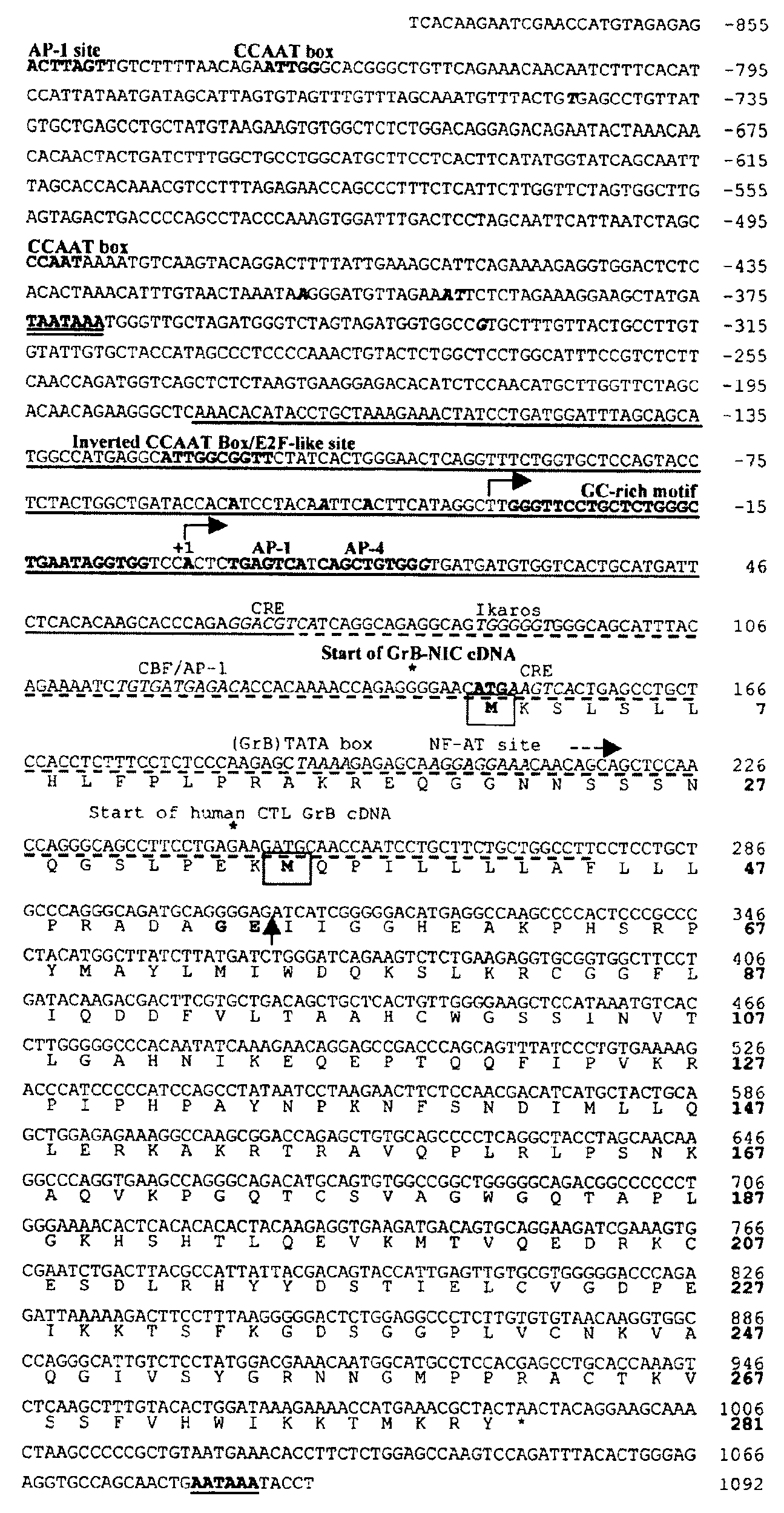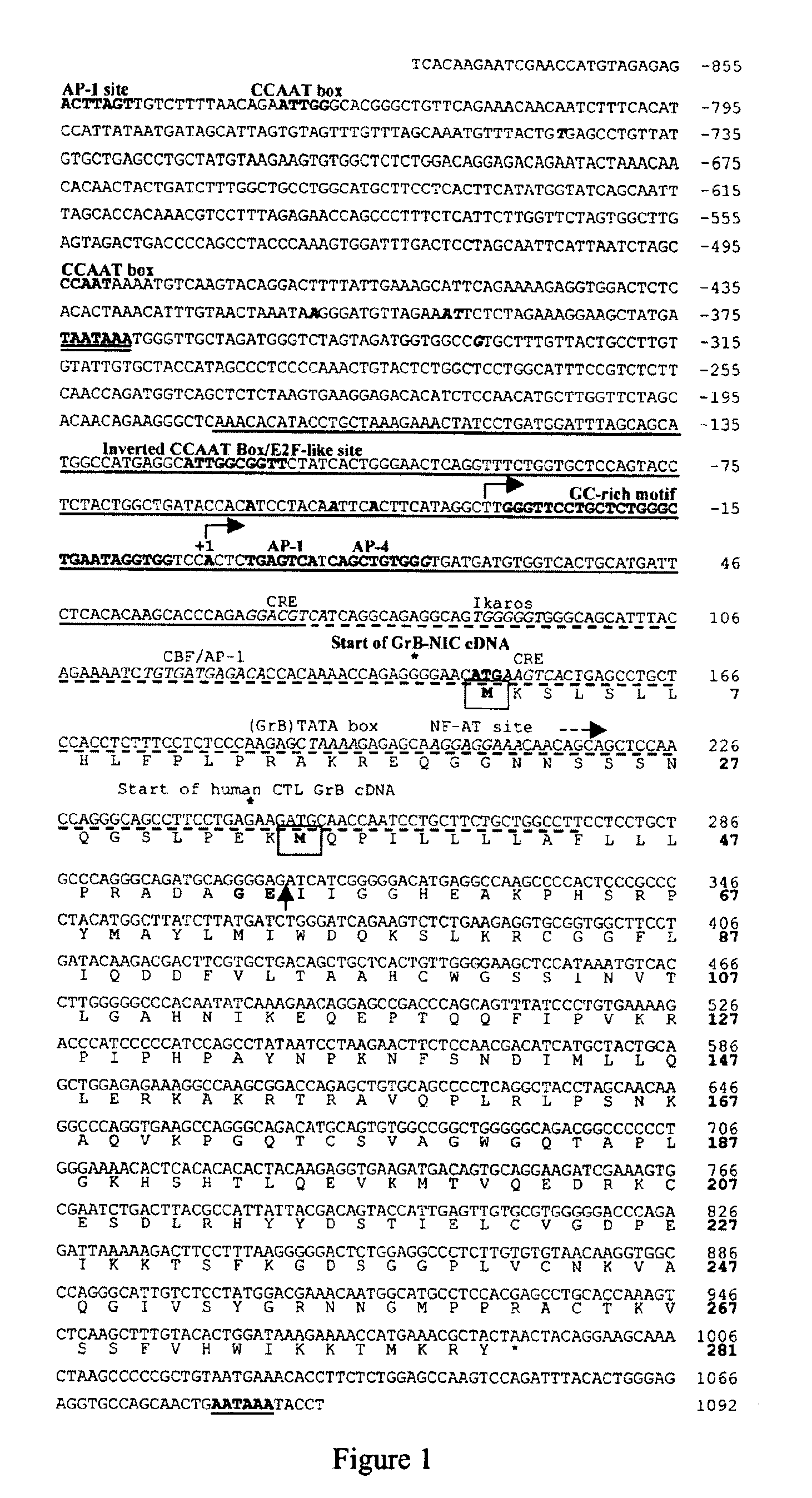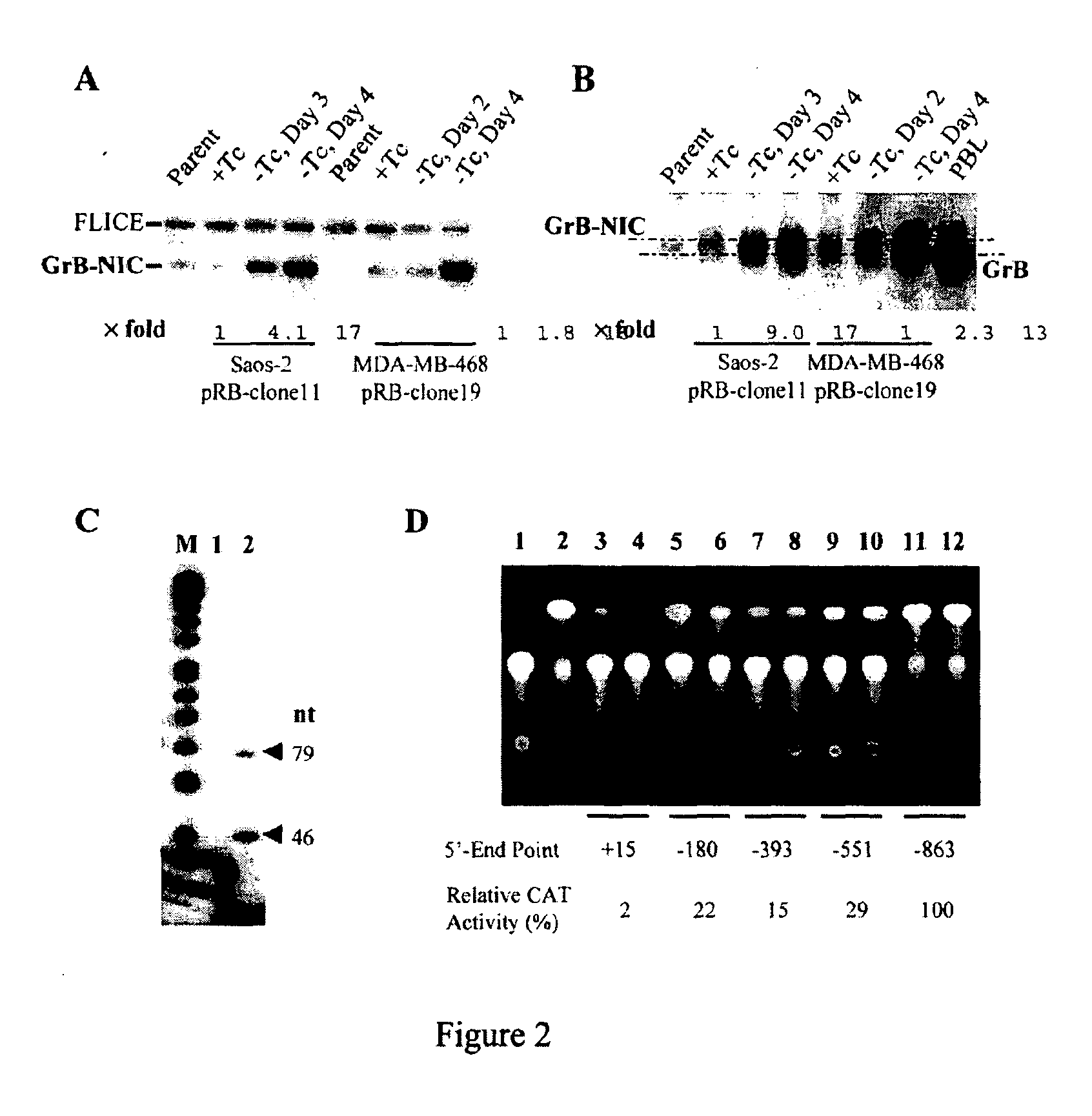Endogenous granzyme B in non-immune cells
a non-immune cell, endogenous technology, applied in the field of molecular biology, diagnostics and therapeutics, can solve the problems of inability to determine the extent of the nucleotide sequence identity between more or less closely related rna species, nor the size of the transcripts
- Summary
- Abstract
- Description
- Claims
- Application Information
AI Technical Summary
Benefits of technology
Problems solved by technology
Method used
Image
Examples
example 1
Molecular Cloning of Inducible Granzyme B Gene in Human Non-hematopoietic Tumor Cells
[0237]By using a panel of cell lines in which expression of the wild-type pRB is tightly controlled by tetracycline (Tc) (Xu et al, 1997), the active and inactive genes in Saos-2 osteosarcoma and MDA-MB-468 breast carcinoma cell lines after reexpression of pRB were examined. The peak levels of ectopic pRB expression in these cells are comparable to those observed in tumor cells overexpressing pRB in vivo (Xu, 1995). An approach involving differential display polymerase chain reaction (DD-PCR) and cDNA microarray assay was applied to identifying genes whose transcription is activated in the tumor cells upon pRB-induced growth arrest. Unexpectedly, one of the cloned cDNAs predicts a protease that shares complete amino acid identity with the human CTL / NK cell-specific GrB zymogen but is 34 amino acids longer at the amino terminus (FIG. 1). This heretofore unidentified and unisolated peptide was designa...
example 2
Mature Endogenous GrB-NIC Protease is Essentially Identical to Lymphocyte GrB and Enzymatically Active
[0238]Expression of GrB-NIC in Saos-2 and MDA-MB-468 tumor cells during pRB-induced growth arrest was further studied at the protein level by immunochemical staining and Western immunoblotting. As detected by immunostaining using anti-GrB antibodies (FIG. 3A), GrB-NIC is located both in cytoplasm and in nuclei (mainly in nucleoli); a comparable pattern is observed for GrB from IL-2-activated PBL (Trapani et al., 1996). Confocal laser scanning microscopy (CLSM) images obtained by double immunofluorescence staining of pRB and GrB-NIC reveals that the GrB-NIC protein accumulates in the pRB+ (in Tc-free medium), but not in the pRB− (in medium containing Tc) Saos-2 and MDA-MB-468 tumor cells (FIG. 3A, inserts in panels a-d). Western blotting demonstrates GrB-NIC protein triplets from the growth-arrested Saos-2 and MDA-MB-468 tumor cells with apparent molecular masses (Mr) of 26, 33, and ...
example 3
Accumulation of Endogenous GrB in Non-immune Cells is Accompanied by Site-specific Cleavage of Dephosphorylated pRB and Post-growth-arrest Apoptosis
[0241]The RB protein status in the RB-reconstituted Saos-2 cells was evaluated by Western blotting. As shown in FIG. 5A, site-specific proteolytic cleavages of pRB occur in the Tc-regulated, RB-reconstituted tumor cell lines. After the tumor cells had been grown in Tc-free medium for 4 or more days, pRB was completely dephosphorylated (FIG. 5A, lane 2). An interior RB protein cleavage fragment of ˜42 kDa (pRB42) (An and Dou, 1996) was detected following re-addition of Tc (0.5 μg / ml) to the medium to switch off expression of pRB (FIG. 5A, lane 3). Moreover, both the pRB42 and a C-terminal cleavage segment of pRB (pRB) that is roughly 5 kDa smaller than the full-length pRB (Tan et al., 1997; Chen et al., 1997) were observed when the growth-arrested tumor cells were subsequently cultured in medium with low Tc concentrations (0.01-0.05 μg / ml...
PUM
 Login to View More
Login to View More Abstract
Description
Claims
Application Information
 Login to View More
Login to View More - R&D
- Intellectual Property
- Life Sciences
- Materials
- Tech Scout
- Unparalleled Data Quality
- Higher Quality Content
- 60% Fewer Hallucinations
Browse by: Latest US Patents, China's latest patents, Technical Efficacy Thesaurus, Application Domain, Technology Topic, Popular Technical Reports.
© 2025 PatSnap. All rights reserved.Legal|Privacy policy|Modern Slavery Act Transparency Statement|Sitemap|About US| Contact US: help@patsnap.com



